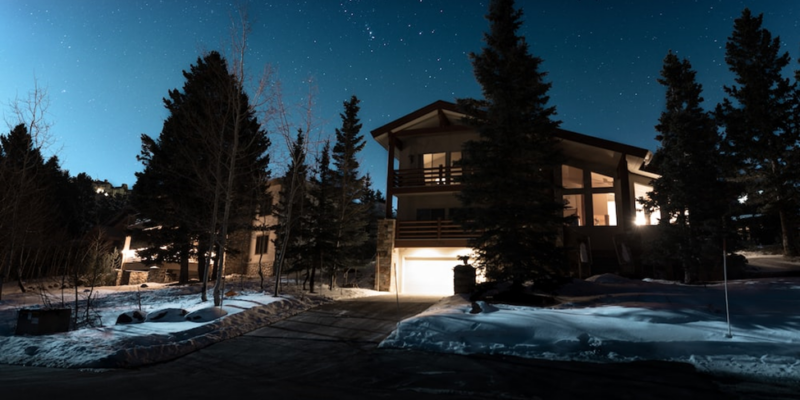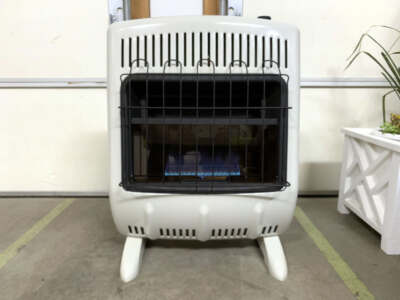The winter season is a difficult period for homeowners. Snow buildup on the roof, ice forming around your home, heavy rains, and negative temperatures are part of the many challenges homeowners face during winter.
Homeowners in cold regions, such as the Mountain areas, Northeast, and Midwest, should weather-proof their homes before the cold weather begins. Besides adopting A-frame house plans designed to ease snowfall, homeowners should consider the following tips to protect their homes from snow damage.
1. Protect Your Plumbing Pipes
Water in your home’s plumbing and holding containers expands as it freezes due to low temperatures. Due to freezing and subsequent expansion, plumbing pipes crack and burst, causing significant damage. The best way to avoid this calamity is to drain water from sprinkler systems, outdoor faucets, and uncovered plumbing pipes.
You should disconnect outdoor hoses, insulate outdoor faucets, and protect pipes that run through unheated parts of your home, such as plumbing connections in the attic, basement, and garage. Similarly, you should know the location of the water shut-off valve in case of an emergency.
2. Winterize Your Home’s Interior
Making specific home improvements before winter can also protect your home from snow damage. Below are a few tips for prioritizing:
- Seal your home’s interior from the exterior – Start by inspecting your home for cracks and openings on the foundation, around pipes, exterior sidings, and doors and window frames. Seal any cracks with foam insulation or exterior caulking. You should also inspect the roof for problems such as missing shingles, broken tiles, and other problems that can exacerbate snow damage.
. - Inspect the chimney and fireplace – Ideally, you should inspect the chimney each fall. Besides ensuring it doesn’t house birds and animals’ nests, ensure the flue opens and closes perfectly. You should also check the chimney draft by lighting a small fire.
- Install storm windows – Windows are among the major contributors to heat loss during winter. To avoid heat loss, replace single-pane windows with double or triple-pane windows.
- Tune your furnace – Like the chimney, you should evaluate the condition of your furnace before winter. Inspect and clean various parts of the furnace to maximize efficiency. Similarly, replace disposable air filters with HEPA filters. Patch leaks in the ductwork to improve efficiency, seal joints, and wrap the ducts with insulation. Hiring professional contractors to inspect your heating system before winter is prudent.
- Ensure your floors are covered – Bare floors also contribute to heat loss during winter. Installing insulated carpets and rugs prevents heat loss, ensuring your floor and feet remain warm.
3. Check Your Gutters and Downspouts
Gutters and downspouts can significantly contribute to snow damage during winter. In most cases, snow and ice melt and flow into gutters and downspouts when temperatures rise during the day. It then refreezes in the evening, clogging gutters and downspouts. To avoid possible damage:
- Choose the right gutters – Picking the right gutters for your home is the first step to mitigating snow damage during winter. Unknown to most homeowners, there are several gutter types and material options. If you live in snow-prone areas, consider seamless gutters over residential aluminum gutters, as they will protect your home better.
- Install custom gutters – You can also protect your home from winter storm damage by installing custom gutters. Custom gutters channel water away from your roof and home, eliminating the risk of refreezing.
- Clean your gutters frequently – Gutter maintenance, which primarily involves cleaning, also prevents storm damage. Make sure your gutters are free from branches, leaves, and other materials that can clog or block free flow.
- Redirect the downspouts – With the gutters fully prepared for winter, you should focus on the downspouts. Gutters simply redirect water from the roof to the downspouts, which typically drain water into the main sewer. A blocked downspout means that excess water will overflow, which can cause water damage to the siding, foundation, basement, and landscaping.
4. Monitor Ice Dams On Your Roof
Endnote
There’s a lot that goes into preparing your home for winter. The costs of protecting your home or recovering from winter damage can quickly add up, especially for homeowners living in mountain areas and the northeast regions. You should check to confirm if your home insurance policy covers a percentage of winterizing costs.










Comments